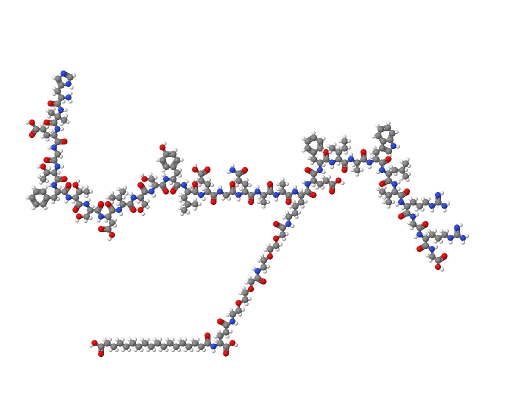Semaglutide is a novel long-acting glucagon-like peptide-1 (GLP-1) analog that inhibits glucagon secretion, reduces appetite and eating, and slows the emptying of stomach contents. As a clinical drug, it has significant advantages in terms of safety.
Polypeptide synthesis involves connecting different units of amino acids according to the order in which the amino acids are arranged in a natural substance. Its synthetic methods mainly include biological synthesis and chemical synthesis.
Biosynthesis method
In addition, the method of biosynthesis can be divided into fermentation, enzyme dissolution, genetic engineering and enzyme catalysis.
Fermentation: the production of polypeptides through the metabolic process of microorganisms. The advantages of this method are low cost and environmentally friendly, but it faces certain challenges in terms of industrialization.
Enzyme synthesis is the use of biological enzymes to break down animal or plant proteins of large molecules to obtain small peptides. The characteristics of this process include lower yields, higher levels of pollution and unstable product quality.
Genetic engineering: The use of DNA recombination technology, by manipulating DNA to control the sequence of polypeptides. This approach has the advantages of low cost, environmental safety, large research and development input and long research and development cycle.
Enzyme catalysis: A method that uses the catalytic action of enzymes to convert intermediates into polypeptides. The advantages of this method are low cost and environmentally friendly, but it also faces difficulty in research and development and long cycles.

Chemical synthesis method
Chemical synthesis is achieved through the dehydration condensation reaction of amino acids, which can be divided into liquid-phase synthesis and solid-phase synthesis, with the main difference being whether a solid resin is used.
Liquid-phase synthesis: This method typically involves stepwise synthesis or fragment condensation. Stepwise synthesis usually begins at the C' terminus of the chain, with each amino acid component being added sequentially to the growing amino acid chain. α-Amino-protected amino acids are used. Typically, the target sequence is first reasonably divided into several fragments, and each fragment is then synthesized stepwise. Finally, the fragments are connected according to the sequence requirements. The advantage of liquid-phase synthesis lies in the fact that each intermediate product can be purified, and non-amino parts can be freely modified to prevent the loss of amino acids. However, this method has the drawbacks of a limited synthesis scope, a longer synthesis time, and a relatively large amount of work required for intermediate purification.
Solid-phase synthesis: Solid-phase synthesis is a method that involves fixing the C-terminal end of an amino acid on an insoluble resin, followed by a series of condensation reactions. Solid-phase synthesis can be divided into FMOC and BOC methods. The advantages of solid-phase synthesis include high yield and automation. However, the intermediate products cannot be purified, which results in lower purity compared to products synthesized in liquid phase. Therefore, reliable separation techniques must be employed to achieve purification.
Post time: 2025-08-04
